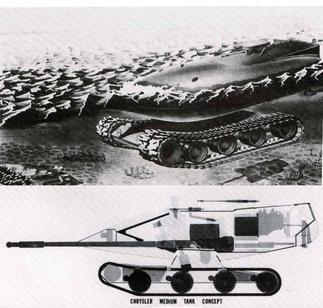Despite an underperforming economy and budget cutbacks, Russia has still managed to keep their place at the forefront of American discussion when it comes to looming military threats, and that’s certainly no coincidence. Russia is keen to make themselves the weapons supplier of choice for nations America won’t sell to, and snagging media coverage for their advanced weapons programs is an essential part of that endeavor.
Unlike the free (though certainly flawed) media infrastructure we have in the United States, Russia’s media is almost entirely state-owned. That means there are no dissenting views or lively debates regarding Russian domestic or foreign policy to be found in their news media, but more importantly to us on this side of the Red Curtain, they employ the same state-sanctioned approach to foreign reaching outlets as well.
Russia owns lots of news outlets all over the world (some of which recently had to register as foreign agents in the United States), and they use this reach to shape perceptions of their military hardware. Stories produced by these state actors then get picked up in good faith by other outlets that know their audiences will love a video of Russian infantry robots storming muddy battlefields and before you know it, Russia’s in the news again… and this time there’s lasers!
Here are just some of the “advanced” Russian weapons that littered American headlines last year… and the ugly truth behind them.
Russian robot tank in action: Uran-9 performs fire drill
Russia pretended their Uran-9 Unmanned Combat Vehicle fought in Syria
In May of 2018, Russia announced that their new infantry drone, the Uran-9, had officially entered the fight in Syria, where Russian forces have been bolstering Bashar al Assad’s regime against Syrian Democratic Forces for years. The drone’s combat successes stole headlines the world over, and one even participated in Russia’s Victory Day Parade last year.
According to Russian-based media, the semi-autonomous combat vehicle comes equipped with a 30 mm 2A72 autocannon as its primary weapon, along with a 7.62 chambered PKTM machine gun, four anti-tank missiles, and six thermobaric rocket launchers. It all sounded really impressive until June when Russian officials speaking at a security conference called “Actual Problems of Protection and Security” admitted that despite footage of it rolling around Syria… the drone tank plain old doesn’t work. Soon after, mentions of the Uran-9 and Russia’s Terminator-like plans for future wars declined rapidly.

Dude’s practically invisible!
Russia announced developed “Predator-style” active camouflage… then quickly forgot
Russian arms manufacturer Rostec also announced a breakthrough in camouflage technology last year, claiming that their new “electrically-controllable material” could instantly change color based on the environment it was in, providing Russian troops and even vehicles with the most advanced and effective camouflage ever seen on the battlefield. This game-changing technology again drew headlines all over the world as Rostec and Russian officials touted an upcoming demonstration of the tech.
Of course, after thousands of stories were written about this breakthrough technology, Rostech never followed through on any kind of demonstration, releasing stills of what looks like a guy in a motorcycle helmet and hockey pads instead. It didn’t matter — by then, the story had already become much larger than any corrections ever would be.

About as far as it goes.
(Ministry of Defence of the Russian Federation)
Putin’s “invincible” nuclear powered missile is a national embarrassment
In a speech Russian President Vladimir Putin delivered last March, he touted a number of new weapons programs, but none with as much vigor as the new nuclear-powered cruise missile called the 9M730 Burevestnik. That’s right — nuclear powered. The concept makes some sense: nuclear power offers the ability to travel a great distance on a tiny amount of fuel, and as Putin himself claimed, this new missile would have a near limitless range as a result.
But once again, this concept may make for some great headlines, but in practice, the missile has been a dud. Russia conducted four different tests with this missile between November of 2017 and February of 2018 with the nuclear drive failing to engage in every test. According to U.S. estimates, the furthest this missile has made it so far is 22 miles (under conventional rocket propulsion), and the last test resulted in losing the missile somewhere in the Barents Sea. When this program last hit the headlines, it was because the Russian Navy was still out there looking for it. According to Russia, they had another “breakthrough” this past January, however, so be prepared for a new slew of headlines.


























